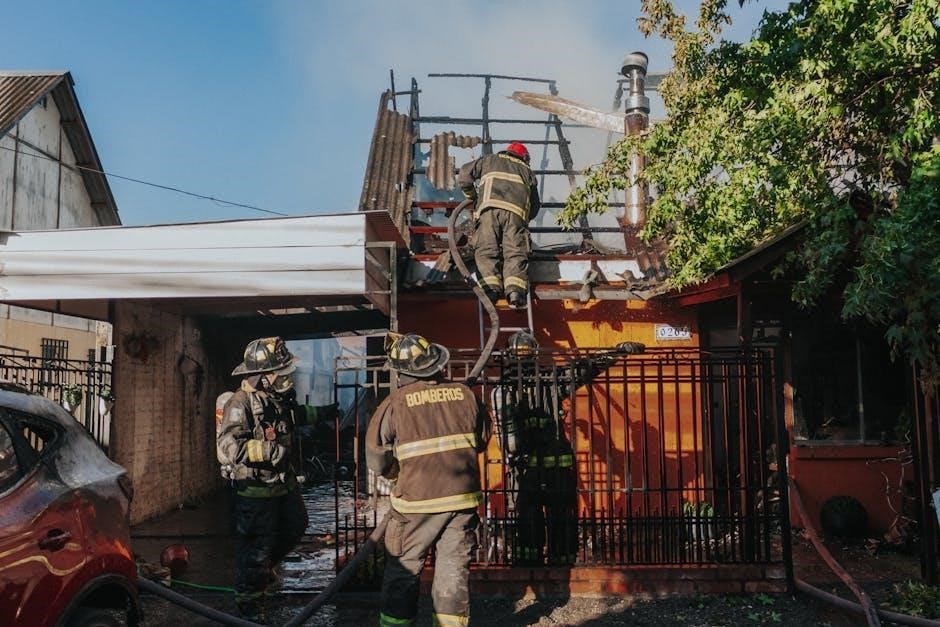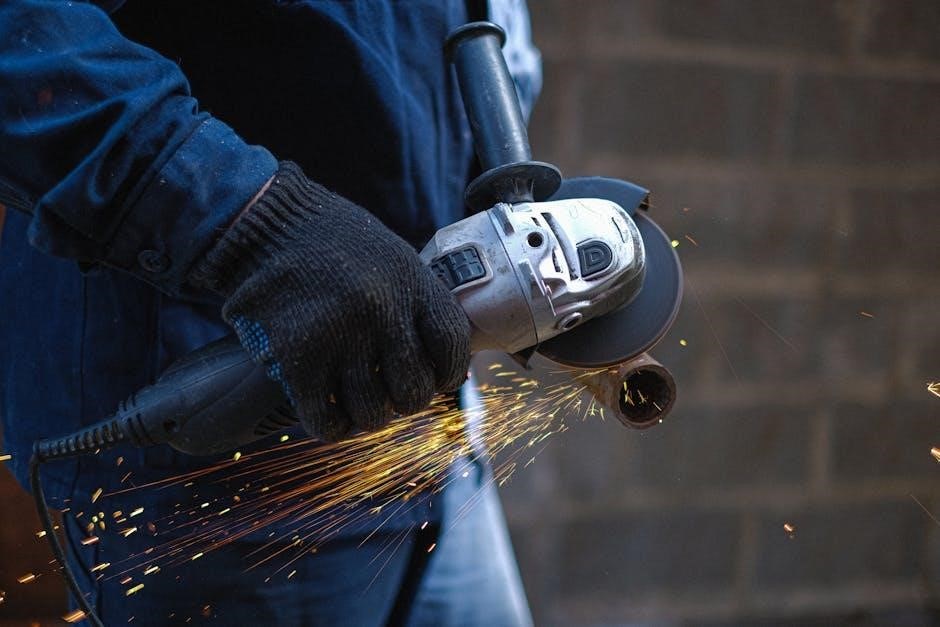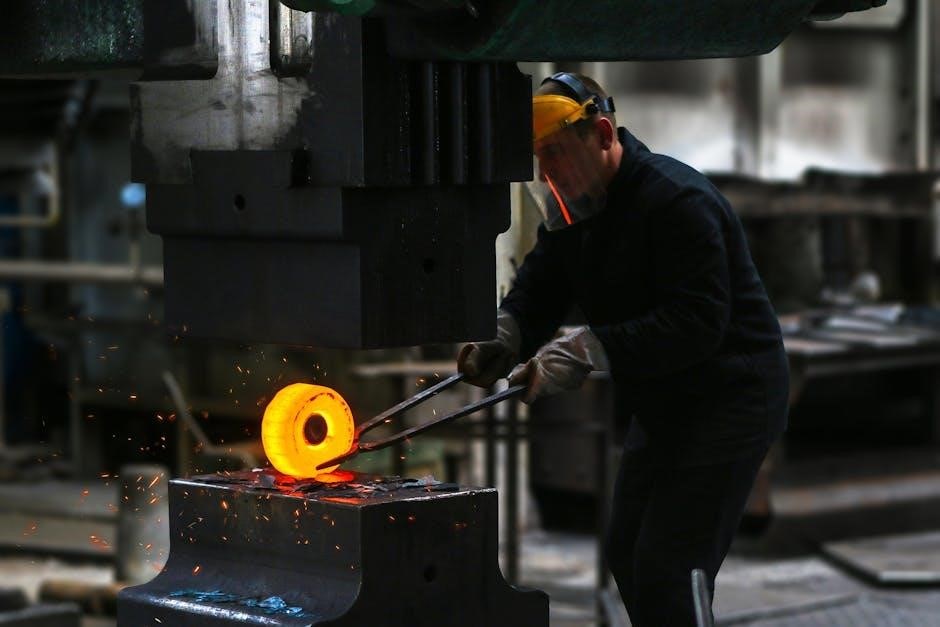NFPA 99 provides minimum requirements for health care facilities‚ including inspection and testing of equipment and appliances‚ ensuring safety and performance‚ as stated in the National Fire Protection Association report.
Overview of the National Fire Protection Association
The National Fire Protection Association is a worldwide organization that produces codes and standards to minimize the possibility and effects of fire and other risks‚ as stated in the NFPA 99 report.
The organization has a long history of developing and publishing standards for various industries‚ including health care facilities.
The NFPA has a strong commitment to safety and works to develop codes and standards that are based on the latest research and technology.
The organization also provides training and education to help individuals and organizations understand and implement the codes and standards.
The NFPA 99 code is one of the many standards developed by the organization‚ and it provides minimum requirements for the design‚ installation‚ and maintenance of health care facilities.
The code is widely adopted and is used by health care facilities around the world to ensure a safe environment for patients‚ staff‚ and visitors.
The NFPA continues to update and revise the code to reflect changes in technology and industry practices.
The organization’s work has a significant impact on the safety of health care facilities and the people who use them.
Purpose and Application of NFPA 99
The purpose of NFPA 99 is to provide minimum requirements for the inspection‚ testing‚ maintenance‚ performance‚ and safe practices for equipment and appliances in health care facilities.
The code applies to all health care facilities‚ except for home care and veterinary care‚ and is intended to ensure a safe environment for patients‚ staff‚ and visitors.
The code is used for safety inspections and provides a framework for health care facilities to follow.
The application of NFPA 99 is critical in ensuring that health care facilities are designed‚ installed‚ and maintained to minimize the risk of fire‚ electrical‚ and other hazards.
The code is widely adopted and is used by health care facilities around the world.
The NFPA 99 code provides a comprehensive set of requirements for health care facilities‚ including medical gas and vacuum systems‚ electrical systems‚ and fire protection.
The code is an essential tool for health care facilities to ensure compliance with safety standards and regulations.

Scope of NFPA 99
NFPA 99 applies to health care facilities‚ except home care and veterinary care‚ providing safety standards.
Health Care Facilities Covered by the Code
The NFPA 99 code covers a wide range of health care facilities‚ including hospitals‚ nursing homes‚ and clinics. These facilities are required to meet the minimum standards outlined in the code to ensure the safety of patients‚ staff‚ and visitors. The code applies to all health care facilities‚ except for home care and veterinary care‚ as stated in the National Fire Protection Association report. The facilities covered by the code include those that provide medical care‚ surgical services‚ and other health care services. The code also applies to facilities that provide emergency medical services‚ such as emergency rooms and urgent care centers. Overall‚ the NFPA 99 code is an important tool for ensuring the safety and well-being of patients and staff in health care facilities. The code provides guidelines for the design‚ installation‚ and maintenance of health care facilities.
Exclusions from the Code
The NFPA 99 code excludes certain types of facilities and services from its requirements. Home care and veterinary care are specifically excluded from the code‚ as stated in the National Fire Protection Association report. Additionally‚ the code does not apply to facilities that do not provide medical care or services‚ such as administrative offices or non-medical research facilities. The code also excludes facilities that are not subject to the same level of regulatory oversight as traditional health care facilities‚ such as wellness centers or fitness studios. These exclusions are intended to focus the code’s requirements on facilities that pose the greatest risk to patients and staff‚ and to avoid imposing unnecessary burdens on facilities that do not require the same level of safety and security measures. The exclusions are clearly outlined in the code to avoid confusion and ensure compliance. The code’s exclusions are subject to change over time.

Key Provisions of NFPA 99
NFPA 99 provides guidelines for health care facilities‚ including equipment and appliance safety‚ as outlined in the National Fire Protection Association report and code requirements.
Minimum Requirements for Equipment and Appliances
The National Fire Protection Association provides guidelines for health care facilities‚ including minimum requirements for equipment and appliances‚ to ensure safety and performance.
The code outlines specific requirements for the inspection‚ testing‚ and maintenance of equipment and appliances‚ such as medical gas and vacuum systems‚ electrical systems‚ and gas equipment.
These requirements are designed to protect patients‚ staff‚ and visitors from potential hazards‚ and to ensure that health care facilities are able to provide safe and effective care.
The minimum requirements for equipment and appliances are outlined in the NFPA 99 code‚ which provides a comprehensive framework for health care facilities to follow.
By following these requirements‚ health care facilities can help to prevent accidents and ensure a safe environment for everyone.
The code is regularly updated to reflect changes in technology and best practices‚ and health care facilities are required to comply with the latest version of the code.
Overall‚ the minimum requirements for equipment and appliances are an important part of the NFPA 99 code‚ and play a critical role in ensuring the safety and well-being of patients and staff.
Performance Criteria for Health Care Facilities
The NFPA 99 code establishes performance criteria for health care facilities‚ including requirements for safety‚ quality‚ and effectiveness.
The code provides a framework for health care facilities to ensure that they are meeting the necessary standards for patient care and safety.
The performance criteria outlined in the code cover a range of areas‚ including infection control‚ medical equipment‚ and emergency preparedness.
Health care facilities are required to demonstrate compliance with these criteria through regular inspections and testing.
The performance criteria are designed to be flexible and adaptable‚ allowing health care facilities to tailor their approaches to meet the specific needs of their patients and communities.
By meeting the performance criteria outlined in the NFPA 99 code‚ health care facilities can help to ensure that they are providing high-quality‚ safe‚ and effective care to their patients.
The code provides a comprehensive framework for health care facilities to follow‚ and is regularly updated to reflect changes in technology and best practices.

Electrical Safety in Health Care Facilities
NFPA 99 ensures electrical safety in health care facilities through standards and guidelines for equipment and appliances‚ as stated in the National Fire Protection Association report online always.
The National Fire Protection Association provides guidelines for electrical safety in health care facilities through NFPA 99‚ which includes standards for equipment and appliances.
Electrical safety is crucial in health care facilities to prevent accidents and ensure patient safety.
The NFPA 99 code provides minimum requirements for the inspection‚ testing‚ and maintenance of electrical equipment and appliances.
Health care facilities must comply with these standards to ensure a safe environment for patients‚ staff‚ and visitors.
The code also includes guidelines for the use of electrical equipment in patient care areas‚ such as operating rooms and patient rooms.
By following the guidelines outlined in NFPA 99‚ health care facilities can reduce the risk of electrical accidents and ensure a safe and reliable electrical system.
Regular inspections and testing of electrical equipment are essential to ensure compliance with the code and prevent electrical hazards.
Overall‚ the introduction to electrical safety in NFPA 99 provides a comprehensive framework for health care facilities to ensure electrical safety and prevent accidents.
Common Standards for Electrical Safety
Electrical safety standards in NFPA 99 include guidelines for equipment and appliance testing‚ inspection‚ and maintenance.
ANSI AAMI/ES60601-1 is another standard that provides requirements for electrical safety in health care facilities.
These standards ensure that electrical equipment is safe for use in patient care areas.
Compliance with these standards is crucial to prevent electrical accidents and ensure patient safety.
Health care facilities must follow these standards to maintain a safe and reliable electrical system.
The National Fire Protection Association provides resources and guidelines for health care facilities to comply with these standards.
Regular training and education on electrical safety standards are essential for health care staff to ensure compliance and prevent accidents.
By following common standards for electrical safety‚ health care facilities can reduce the risk of electrical hazards and provide a safe environment for patients and staff.
These standards are regularly updated to reflect new technologies and best practices in electrical safety.

Medical Gas and Vacuum Systems
NFPA 99 regulates medical gas and vacuum systems for safety and performance in health care facilities‚ as stated in the National Fire Protection Association report and guidelines online always.
Requirements for Medical Gas Systems
The National Fire Protection Association provides guidelines for medical gas systems in health care facilities‚ including requirements for installation‚ inspection‚ and testing.
These guidelines are outlined in the NFPA 99 report‚ which covers the safety and performance of medical gas and vacuum systems.
The report states that medical gas systems must be designed and installed to ensure safe and reliable operation‚ and that regular inspections and testing must be performed to maintain system integrity.
The guidelines also cover the requirements for medical gas system components‚ including pipes‚ valves‚ and outlets.
Additionally‚ the report provides information on the safety features that must be included in medical gas systems‚ such as alarm systems and emergency shut-off valves.
Overall‚ the requirements for medical gas systems outlined in the NFPA 99 report are designed to ensure the safe and reliable delivery of medical gases to patients in health care facilities.
The guidelines are an important resource for health care facility managers and medical gas system designers and installers.
